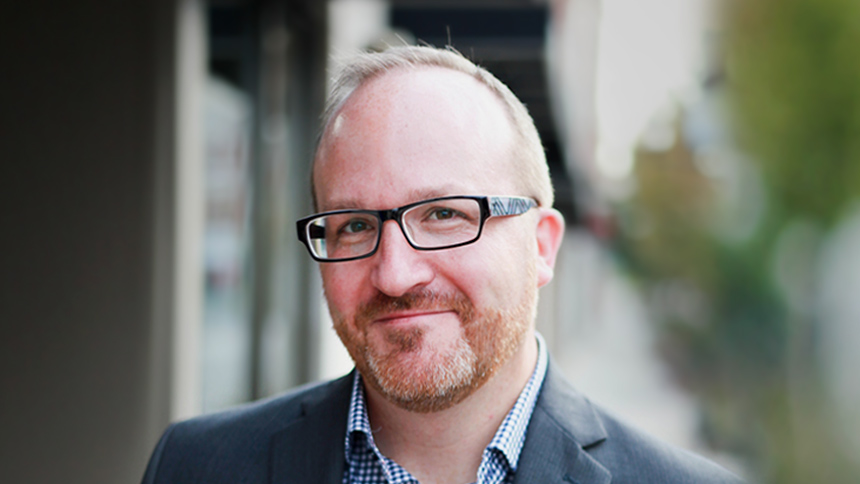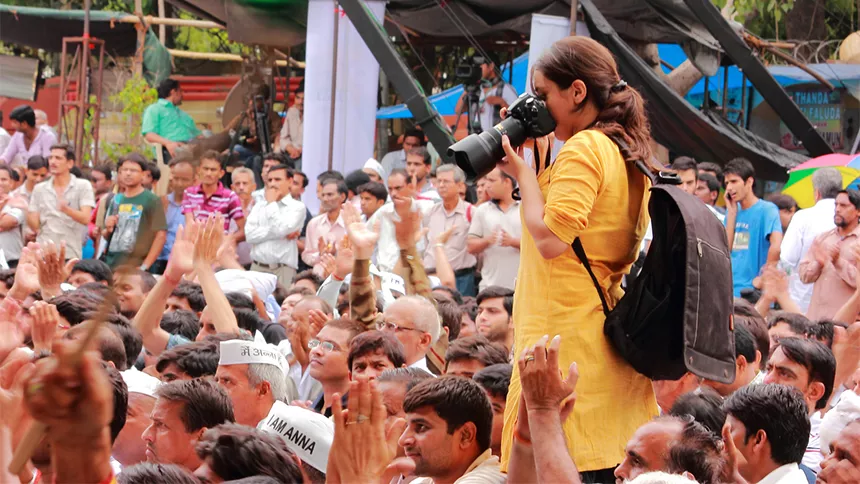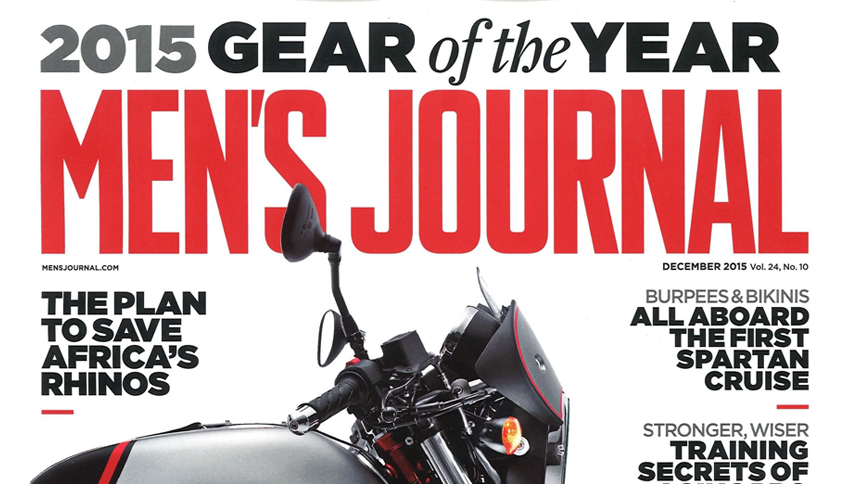In the early years of his career, Luke Duggleby found himself in a situation that he hadn’t quite anticipated. He had traveled to East China to meet villagers protesting against massive pollution caused by a factory that had poisoned their land. “In a rare show of defiance, they had set-up a road block at the entrance to the factory,” says Duggleby, a British freelance photojournalist currently based in Bangkok and the recipient of the 2017 South Asia Journalist Association (SAJA) Reporting Fellowship.
He met the villagers and took pictures of their protest. “As we were leaving, three black cars arrived and plainclothed officials told us to get in.” After a gruelling 5 hours of interrogation, Duggleby’s memory cards were wiped clean. He was finally released and ordered to leave the city. This was his introduction to the fact that danger for a journalist can come in many forms—not just physical harm.
Also on Mediabistro


“At the time, we had done no prior research and neither did we attempt to contact any local people (beforehand). I had not understood the system, coming from a western society that allows such coverage,” he says. Since then, Duggleby has taken a course in security training and self-defense; he’s far more aware of the political situation and cautious when taking on sensitive assignments.
Every day, all over the world, journalists and photographers (even those not necessarily covering conflict zones or tension ridden areas) find themselves facing grave difficulties, courting trouble and arrest, bearing physical hardships—even dealing with death threats—all in the course of doing their jobs.
And as the recent tragic death of Swedish freelance journalist Kim Wall has proved, any assignment can have an element of risk. As a freelancer, how can you protect yourself while ensuring that you still research deeply and report your stories without limitations? Here are some tips and resources that can help.
The Three A’s of Planning:
“Security and awareness training should be mandatory for all journalists, no matter where their reporting area is,” says Cath Mossom, who served in the British military for 22 years and now runs RPS Partnership, a crisis management and hostile training facility an hour from London, UK. “Whether they are working undercover, reporting against drugs, crimes, corruption, natural disasters, or even when they are reporting from home on domestic issues, all journalists face some risk.”
Staying safe involves detailed planning and the three A’s will help, says Mossom: “We need to learn how to be Aware, to Anticipate [problems] that may arise and to be able to Avoid any danger/trouble. The more knowledge you have of an area, the more confident you will be once you arrive.”
Confidence borne of such awareness can be a huge advantage, because it translates into body language that ensures that you’re less likely to be a victim of an attack. “If you arrive in an airport for instance, and don’t know the lay out, or where your driver is, you look lost and vulnerable. This can make you an easy target,” she says.
If you’re taking on a reporting assignment that’s taking you into unfamiliar territory, be sure to research the lay of the land as much as possible before you set out. Study Google Maps, talk to other reporters or travelers who have been here before, be aware of the weather, the political situation and even the potential health risks involved. Keep emergency numbers handy.
“We need to also think about contingency planning more, so that if something were to happen, we have already thought through the process, and we are then able to react more quickly and decisively for a better outcome, rather than be frozen to the spot,” says Mossom.
Register with Organizations That Can Help
The brutal killings of freelance journalists James Foley and Steven Sotloff in the summer of 2014 in Syria shocked many newsrooms and set in motion a chain of events that culminated in the creation of ACOS (A Culture of Safety). In September 2014, Reuters, The Associated Press, and the International Press Institute held private meetings in New York and Chicago where editors discussed how to respond to these murders and promote freelance journalists’ safety. During the following months, a volunteer committee made up of representatives of the Frontline Freelance Register (FFR), Reuters, The Associated Press, the Dart Center, GroundTruth Project, and the Overseas Press Club Foundation drafted the Freelance Journalist Safety Principles, a document aimed at media organizations and freelancers alike that lists a set of safety standards for freelancers and local journalists. Several other organizations, including the Rory Peck Trust, Reporters without Borders, and the Committee to Protect Journalists, were involved in the creation of the initiative.
“We focus on freelancers and local journalists worldwide. We are working on several short videos around key digital security aspects. This came as a top priority and a crucial need for freelancers,” says Elisabet Cantenys, Executive Director, ACOS Alliance. “Ultimately, we want to embed a culture of safety. In practical terms, this means finding options for insurance, supporting and coordinating safety training, facilitating the exchange of safety information and resources.”
It was a time when news budgets were shrinking and freelancers were increasing in numbers. “We started Frontline Freelance Register (FFR) in 2013 to address these changing needs in the industry. Having systems in place to support and protect us is so important,” says Emma Beals, independent journalist, co-chair of ACOS Alliance and co-founder and former board member of FFR. “The ACOS Alliance principles and lays out several things that freelancers and news organizations should discuss and prepare before an assignment and learn about how to better protect themselves.”
The Rory Peck Trust is another organization that supports freelancers worldwide. Their website has templates for risk assessments and communication plans. In August, it teamed up with FFR to offer free consultations for freelancers around the world with security advisors. In these online sessions, freelancers reporting outside of their home countries learned the basics of how to protect themselves.
Reach out to Locals and NGOs
Journalists often hire locals who act as guides. “You not only stay safe this way, but have more access and deeper insight into any issue,” says Duggleby. Often called ‘fixers’, these locals arrange meetings and gain access to key contacts. Since they know the terrain well, they can help you navigate any pitfalls.
“Good fixers can be expensive, but there are more of them who are getting into this work and promoting themselves on social media,” says Duggleby. If your freelance budget does not include fixers, seeking out NGO’s who handle the issues you’re reporting on would be helpful too. “A recent photo documentary I produced looked at human rights defenders who had been killed in Southeast Asia in the last 20 years. It is a sensitive topic and I worked very closely with a Human Rights NGO who continuously monitored the situation,” says Duggleby.
Listen to your instincts
Sometimes it helps to listen to our gut instincts. Even if this means leaving a certain situation or location prematurely, you should stay tuned to that inner voice that warns you when something is not quite right. And this can apply, even if you’re reporting in a familiar area, that you don’t usually associate with threat.
“There is the misconception that safety concerns only apply to those working on the frontlines,” says Cantenys. “Your email or communications can be compromised anytime. A demonstration can turn violent. A terrorist attack can happen around the corner. Being safe would mean being professional. Also, safety needs to be integrated into your work.”










